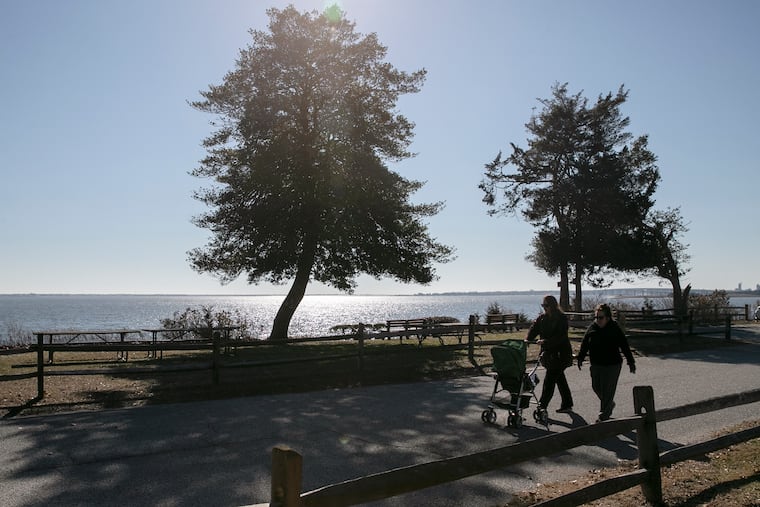‘Moderate drought’ parching much of the Philly region, feds say
A dry run started on Nov. 1, and abnormal dryness now covers the entire region, says the U.S. Drought Monitor. But it's a long way from crisis.

Nature not only was stingy with snow during the winter in the Philly region. Not a whole lot of anything has fallen from the skies since Nov. 1. Maybe the clouds are still exhausted from wringing out Ida’s rains.
In its Thursday update, the U.S. Drought Monitor had about half the Philadelphia region under a state of “moderate drought,” and the rest “abnormally dry.”
Not that the soils around here appear to be especially parched. “Farmers have begun tilling fields for spring planting, and fields I have seen do not look dry,” said Michelle Infante-Casella, a professor and head of the Rutgers Cooperative Extension of Gloucester County, which is among those in the “moderate drought” category.
» READ MORE: Drought anxieties were evident last May. That was before Ida ....
But rainfall deficits have been building since the fall. After one of the drier November-December periods on record, with precipitation just 30% of normal in Philadelphia, the atmosphere has been playing catchup. Amounts still have been 15% to 30% shy of normal, or 1.5 to 3 inches, across the region during the last 90 days, according to the Middle Atlantic River Forecast Center.
In addition to Gloucester County, the areas in the moderate-drought category extended from the Shore through Camden County in New Jersey; in Pennsylvania, most of Chester, all of Delaware, and part of Montgomery Counties, along with a slice of Philly.
About a half-inch of rain, melted snow, and ice was measured in Philadelphia during Saturday’s peculiar winter storm, but it “did not immediately improve soil moisture and stream flows,” the agency said.
While the trees and foliage are working up a thirst, the dryness is not expected to mutate into a crisis. The region is a long way from water rationing, and in the spring outlook released Thursday, the Climate Prediction Center forecasters said the dry conditions around here should be easing.
The local dryness probably doesn’t belong in the same sentence with what’s going on out West, parched by a two-year drought. The climate center says those conditions were likely to persist.
» READ MORE: Western drought forecast to worsen
Nationally, overall conditions improved slightly in the last week, but 60% of the nation was in a state of moderate drought or worse, according to the drought monitor, a partnership among two federal agencies and the University of Nebraska.
That’s the highest level since January 2013.
For its part, the Philadelphia region has been remarkably drought-free in this century. Philadelphia and its four neighboring Pennsylvania counties haven’t been under a drought “warning” or “emergency” in 20 years.
From 1980, the year the records begin, to 2002, warnings or emergencies were declared about once every three years, according to the Pennsylvania Department of Environmental Protection
In recent years, we’ve often had the opposite problem — too much rain.